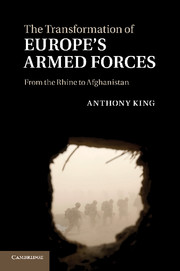8 - Elitism
Published online by Cambridge University Press: 04 February 2011
Summary
Introduction
Since the end of the Cold War, empowered brigades have become a central element in defence postures across Europe. The rise of these elite forces seems almost self-evident. In the face of new wars around the world, Europe's armed forces need troops that can deploy rapidly to potentially hostile situations. The requirement for rapid deployment disadvantages heavy armoured forces that can be transported by plane at best only with great difficulty. Light forces are easier to deploy and sustain. In many of the stabilisation situations which European forces have encountered, heavy armour has been unnecessary. Consequently, light forces have offered European governments the opportunity to insert a robust early presence in crisis regions and, consequently, their steady advance in military importance is explicable in rational operational terms. The advantages of light forces in the current era seem clear. Moreover, with strained public finances elite forces seem to represent the best value for money; they provide the most capabilities, especially the critical ones of deployability in an era of global operations for the least investment. For instance, New Labour's Strategic Defence Review in 1997 stated: ‘In the Cold War, we needed large forces at home and on the Continent to defend against the constant threat of massive attack. Now, the need is increasingly to help prevent or shape crises further away and, if necessary, to deploy military forces rapidly before they get out of hand’ (Directorate of Defence Policy 1998a: 21).
- Type
- Chapter
- Information
- The Transformation of Europe's Armed ForcesFrom the Rhine to Afghanistan, pp. 178 - 203Publisher: Cambridge University PressPrint publication year: 2011

